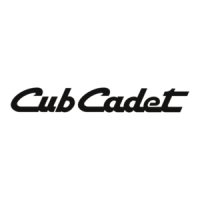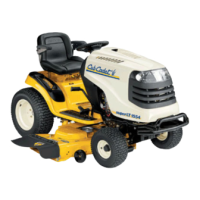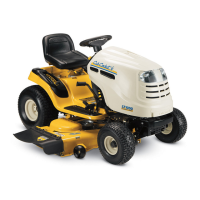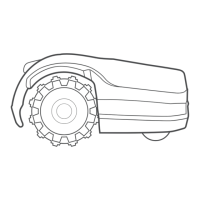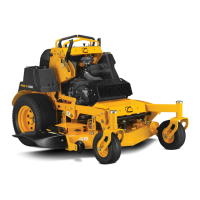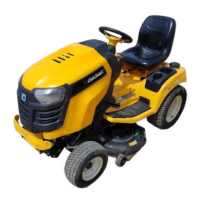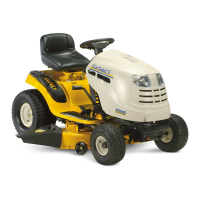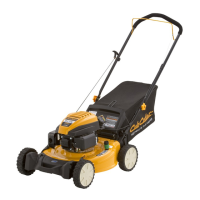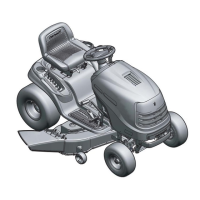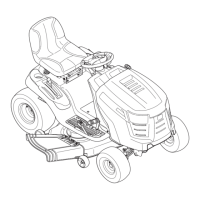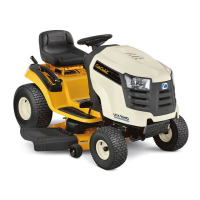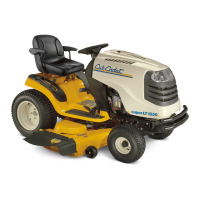8 9
H. Slope Operation
1. All slopes require extra caution. If you feel the mower cannot maintain
traction on the slope, it is too steep to mow. Wet grass will decrease traction
and may cause the mower to slip and slide on the slope. Serious injury or
property damage could result.
2. For your safety, measure any slope before using the mower on the sloped
area. Use a slope measuring device before setting up the mowing zones or
operating this mower on a sloped or hilly area. Smart phone applications can
be also utilized to measure slopes. If the slope at the perimeter is greater than
15 degrees (27%), the mower may slide out of the mowing zone.
3. Do not mow on slopes greater than 15 degrees (27%).
4. Do not operate the mower under any conditions where traction or stability
is in question. Always be sure of the mowing surface. A tip or overturn could
cause serious personal injury or property damage.
5. Stay at least 3 feet (1 meter) from drop-os, ditches, embankments or the
edge of water to help ensure the mower does not get out of the mowing
zone. You could damage the mower or cause a serious injury.
I. Maintenance and Special Instructions
1. Keep the mower in good working order. Replace worn, damaged or broken
parts.
2. To avoid serious injury do not modify the mower in any way.
3. Mower blades are sharp. Wrap the blade or wear gloves, and use extra caution
when changing the blade.
4. Always switch o the mower by disabling device before servicing or
inspecting. Never attempt to service or adjust the mower while it is in
operation. Before cleaning, repairing, or inspecting, make certain the blade
and all moving parts have stopped.
5. The blade should come to a complete stop within (3) three seconds after
pressing the red stop control. If you do not hear the blade stop in less
than three (3) seconds, your mower must be serviced professionally by an
authorized service dealer.
6. Never use a high pressure power washer or hose to clean the mower. Water
can damage components and the programmable controller. Use a damp
cloth to wipe the display clean.
7. Visually inspect blade for damage (e.g., excessive wear, bent, cracked).
Replace the blade with the original equipment manufacturer’s (O.E.M.) blade
only. Non-O.E.M. blades will not t properly.
8. Use of service parts which do not meet the original equipment specications
may lead to improper performance and compromise safety.
9. After striking a foreign object, or getting hung up, stop the mower.
Thoroughly inspect the mower for any damage. Repair the damage before
starting and operating.
10. For areas close to a children’s play area, bodies of water, drop os or public
roads suppliment the perimeter wire with a rigid (wood/stone) boundary
edge at least 15 cm (6 inches) high which will help prevent the mower from
exiting the mowing zone.
11. Clean or replace safety and instruction labels, as necessary.
J. Product End of Use
1. The mower and its accessories should be properly disposed of at the end of
their useful life to prevent waste electrical and electronic equipment from
ending up in landll sites, and to protect and improve the quality of the
environment. Check with your local trash facility or municipality regarding
disposal laws. Many municipalities provide special waste collection sites for
the disposal of batteries and electronic equipment.
2. Do not dispose the battery pack or the mower in unsorted municipal/
household trash.
3. Do not dispose of the battery pack in a re.
4. See local and state regulations for any special disposal or recycling laws and
requirements. Refer to pages 82-83 for disposal instructions.
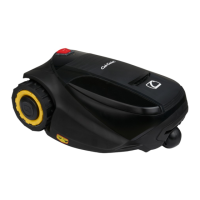
